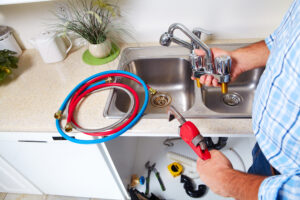Proper installation, when coupled with a good maintenance regime, goes a long way in achieving effectiveness and a long life for a heater.
However, this understanding now opens us up to another discussion, how to do effective DIY maintenance on your heater. This article gives a maintenance guide for a water heater.
Safety First
The journey begins with you taking all the necessary precautionary measures first.
Trying to perform maintenance on a running heater can compromise safety and put you at risk of electrocution. You could also lose the entire equipment if it blows up.
To avoid that possibility and protect the integrity of your equipment, be sure to consider the needed precautionary measures.

Maintain your water heater for optimal results
Cut Off Power
For electricity-operated equipment, you need to cut off the power connection at the circuit breaker and disengage the plug. This guarantees you maximum safety since a kid accompanying you to the utility room may turn the power back on without your knowledge. For gas-operated equipment, cut off the supply at the intake tap.
Check for Gas Leaks
Then conduct a short walkthrough around a gas-operated equipment to check for possible gas leaks. In addition to being a safety hazard due to possible fires or even explosions, inhaling natural or petroleum gas will compromise your health.
Maintenance Tasks
Having given your heater a clean bill of health, you can then embark on the maintenance. To do this:
Inspect the Heater
The actual maintenance starts with you conducting a thorough assessment of the equipment. It is during the assessment that you should notice signs of corrosion. The sight of soot or other black substances is an indication that something is amiss with the equipment.
Test the Temperature and Pressure Release (T&P) Valve
This refers to a precautionary feature that helps remove the excess pressure. To ascertain the functionality of your valve, open up the lever and let some water out. Should water fail to come off the valve or the lever does not close properly, then consider replacing it.
Flush the Tank
The accumulation of residue at the base or inner surface reduces the functionality of the heater, thereby inflating your monthly power bills. It also negatively affects the heater by reducing its expected service span. To reduce and prevent the buildup, connect a water hose that connects to the exterior of your house then release the drain valve. When completely empty, release the intake valve a little to stir up the sediment then flush it out. Repeat this process intermittently until the flush water is clear of sediment.
Inspect the Anode Rod
The anode rod refers to a piece of iron rod that is responsible for attracting sediments contained in the water. This works by preventing corrosion from rust. If the rod has many deposits, consider changing it.
Assess the Thermostat
The thermostat is a feature responsible for regulating the temperature at which your equipment heats water. To prevent possible accidents that could arise from scalding, your thermostat calibration should range from 120˚F to 130˚F. This thermostat reading also helps ensure the efficiency of your equipment for less energy bills.
Common Repairs
Replacing the Thermostat
If the thermostat keeps readjusting itself, it is an indication of an anomaly in functionality, and this will translate to increased energy bills. To combat this problem, consider replacing it.
Cleaning the Burner
To clean the burner, remove the burner components and brush off any debris around the surface. At the same time, always remember to assess for signs of blockages in air intake and exhaust vents.
Fixing Water Leaks
A leaking valve simply implies that it is not tightly secured. To combat this challenge, tighten or change the washers on the fittings. Any sign of tank leaks simply means it is high time you replaced the equipment altogether.
For serious issues like replacement of the equipment and other electrical issues, consider contracting the job to a professional. They are adequately skilled and technically experienced to combat issues of water heaters of any model and make. Annual checks by a professional are part of heater care practices. These will help combat issues before they escalate to serious problems, a point at which it could be too late for repairs. It is also highly recommended to keep records of annual maintenance and repairs. This plays an essential role in scheduling the next checks. This way, you will never be late to have your heater maintained and repaired. When selecting your expert, be sure to go for the best in the market.




